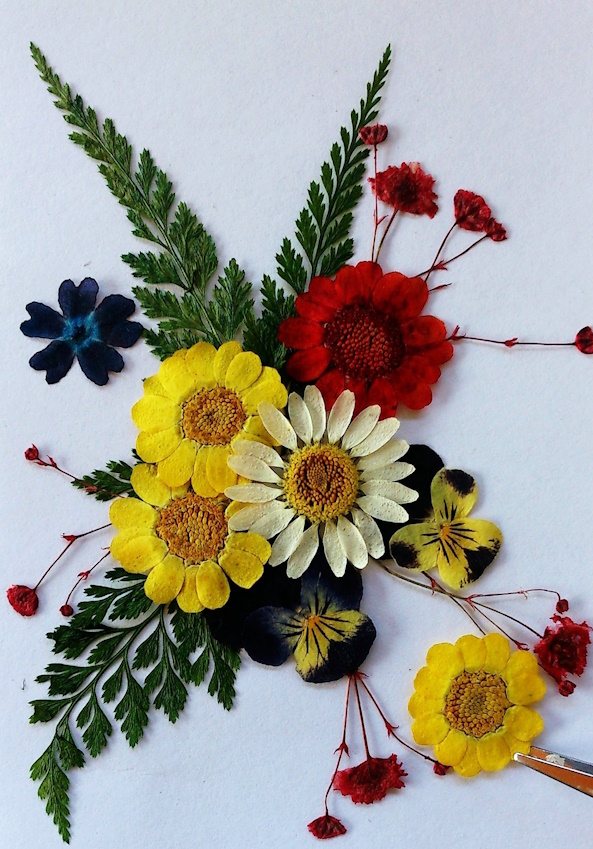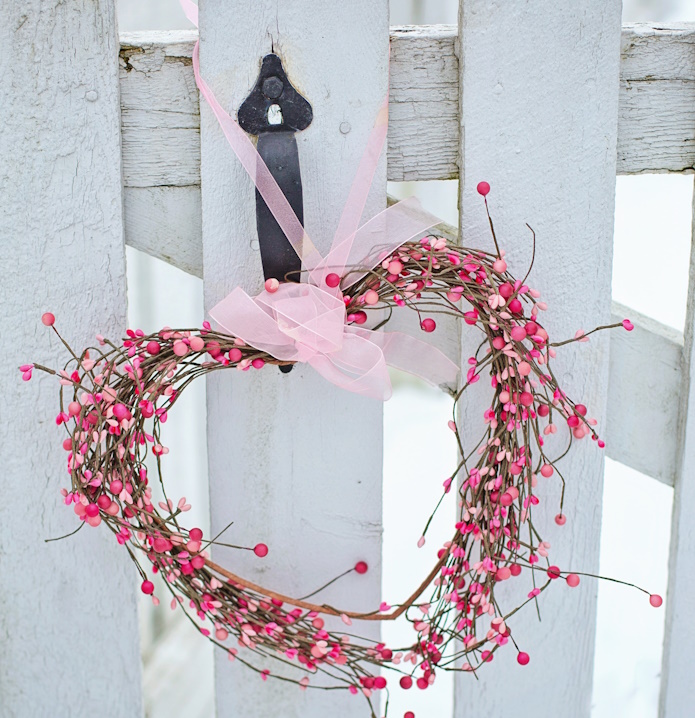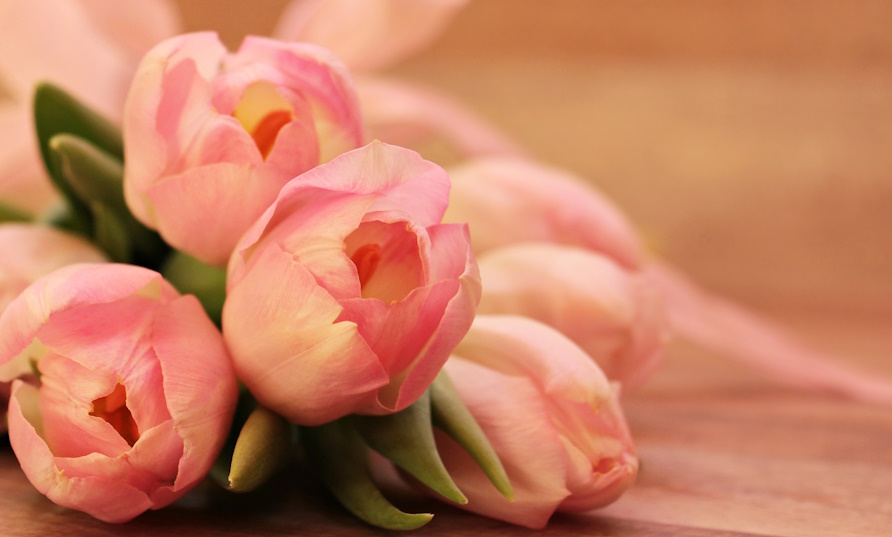Welcome to a heartwarming St. Valentine’s Day celebration with a homesteading twist! Here on the homestead, we know that love isn’t about extravagant gifts but simple, meaningful gestures that come straight from the heart. Whether it’s crafting handmade gifts, baking farm-fresh treats, or creating cozy décor, Valentine’s Day is the perfect opportunity to celebrate with a rustic touch. I have prepared an article filled with delightful crafts, recipes, and ideas to bring warmth and love to this special day.

History of St. Valentine’s Day & Traditions
The history of St. Valentine’s Day goes back to ancient Rome, when the emperor made an order to mandate matrimonial ceremonies. However, a brave priest named Valentine defied this order and secretly continued to marry young couples. While the exact details of St. Valentine’s story are unclear, what remains constant is the theme of devotion, sacrifice, and the triumph of love over adversity—themes that still resonate deeply with us today.
Language of Flowers
The Victorian era brought us many Valentine traditions that align beautifully with homesteading values. They developed an intricate system of communicating through flowers, herbs, and plants. Each bloom carried specific meaning, allowing complex messages to be sent through carefully crafted bouquets. As homesteaders, we can grow these plants ourselves, adding layers of intention to our gardens.
Handmade Valentines
Before mass-produced cards, Valentines were handcrafted using natural materials like pressed flowers, feathers, and hand-colored papers. This tradition of creating from available materials mirrors our homesteading philosophy of working with what nature provides.
Tokens of Love from Nature
Rural communities often exchanged tokens of love made from natural materials: carved wood hearts, pressed flower bookmarks, and woven grass rings. These traditions reflect the meaningful gifts crafted from our own hands and nature.
As we celebrate Valentine’s Day on our homesteads, we’re continuing traditions that connect us to generations of people who expressed love through the work of their hands.
The Secret Language of Herbs
The tradition of medieval monastery gardens attributing meaning to plants creates a perfect bridge between historical Valentine celebrations and modern homesteading practices. Here’s a guide to traditional Valentine herbs and their meanings, along with cultivation tips for your garden:
Love-Drawing Herbs
- Rosemary: “Remember me”
- Cultivation: Needs full sun, well-draining soil
- Traditional Use: Brides wore rosemary wreaths symbolizing love and loyalty
- Modern Use: Excellent for kitchen garden and dried wreaths
- Lavender: “Devotion”
- Cultivation: Requires excellent drainage, minimal watering
- Historical Use: Tucked into love letters to perfume them
- Homestead Uses: Essential for sachets, soaps, and calming teas
- Sweet Basil: “Best wishes”
- Growing Tips: Rich soil, regular pruning
- Traditional Role: Given to wish prosperity to new couples
- Modern Application: Perfect for pesto and cooking
Herbs of Affection
- Thyme: “Courage and strength”
- Growing Notes: Hardy perennial, excellent ground cover
- Historical Significance: Medieval knights received scarves embroidered with thyme
- Uses: Cooking and medicinal teas
- Mint: “Warm feelings”
- Cultivation Warning: Plant in contained areas
- Historical Use: Added to love potions
- Modern Applications: Perfect for teas and desserts
Sacred Love Herbs
- Angelica: “Divine inspiration in love”
- Growing Tips: Needs partial shade, rich soil
- Historical Use: Believed to bring divine guidance to relationships
- Homestead Value: Excellent pollinator attractor
- Sage: “Wisdom in love”
- Cultivation: Full sun, drought-tolerant
- Modern Uses: Essential for cooking and medicinal remedies
- Traditional Belief: Brings wisdom to matters of the heart

Craft Project Ideas
- Dried herb wreaths
- Scented sachets
- Herbal bath salts
- Natural perfumes
Gifts for Medical Applications
- Calming tea blends
- Digestive aids
- Aromatic steam treatments
Valentine’s Day Crafts for Children
One of the joys of homestead life is involving children in seasonal celebrations in ways that connect them to nature and tradition. Here are two simple yet engaging Valentine’s Day crafts that children of all ages can enjoy.

Pressed Flower Heart Suncatchers
This craft teaches children about flower preservation while creating beautiful window decorations that capture the spirit of Valentine’s Day.
Materials Needed:
- Clear contact paper or laminate sheets
- Pressed flowers and leaves from your garden
- Cardboard or construction paper
- Scissors & paper punch
- String or ribbon
- Optional: glitter (or Sugar crystals)
Instructions for Different Age Groups:
Younger Children (3-6):
- Adults pre-cut heart shapes from cardboard, leaving the center empty like a frame
- Help children arrange pre-pressed flowers on sticky side of contact paper
- Let them sprinkle a little glitter (sugar) if desired
- Cover with second piece of contact paper
- Adults help trim edges and punch hole for hanging
- Let children choose ribbon color and help tie
Older Children (7+):
- Can trace and cut their own heart frames
- Learn to arrange flowers in patterns
- Can handle all steps with supervision
Learning Opportunities:
- Plant identification
- Flower pressing techniques
- Color theory
- Basic geometry
- Natural preservation methods
Valentine’s Bird Feeder Workshop
This craft helps children care for winter wildlife while practicing useful homesteading skills.
Materials Needed:
- 2 cups birdseed
- 1/2 cup water
- 2 envelopes (2 tablespoons) unflavored gelatin
- Heart-shaped cookie cutters for molds (inside slathered with lard)
- String or twine
- Drinking straw cut into 3-inch lengths
- Parchment paper
- Mixing bowl
- Measuring cups
- Medium sauce pan & wooden spoon
Instructions:
- Help measure birdseed
- Place seeds in heart molds
- Insert straws for hanging holes
- Decorate gift tags
Step-by-Step Process:
- Mix gelatin with cold water
- Heat mixture until gelatin dissolves
- Stir in birdseed until well-coated
- Press mixture into molds
- Insert straw pieces for holes
- Let dry 24 hours
- Pop out of molds
- Thread with twine for hanging
Learning Opportunities:
- Learn about local birds
- Learn about gelatin as a binder
- Calculate seed-to-gelatin ratios
- Research which seeds attract which birds
- Measuring and following recipes
- Local ecosystem understanding
Both crafts offer valuable learning experiences while creating something beautiful and useful.
Remember to document the process with photos and encourage children to write or draw in their nature journals. This helps build a meaningful connection to both the homesteading lifestyle and the Valentine’s Day tradition of showing love through handmade gifts.
Valentine’s Day Crafts from the Homestead

Dried Flower Heart Wreath
Before the winter frost sets in, I always make sure to dry plenty of flowers from our cutting garden. Roses, lavender, strawflower, and globe amaranth make excellent choices for dried arrangements. Their colors hold beautifully, and they bring a touch of last summer’s warmth to these cold February days.
This stunning decoration can grace your door throughout February and beyond, serving as a reminder of warmer days to come while celebrating the season of love. Here’s everything you’ll need:
- A wire wreath form (or make your own from flexible branches)
- Dried flowers and herbs from last summer’s garden
- Natural twine or raffia
- Pruning shears
Assembly Instructions
To create your wreath, begin by preparing your workspace with all materials within easy reach. If you’re making your own form from flexible branches, soak them overnight to ensure they’re pliable enough to shape without breaking. Wild grape vines work exceptionally well for this purpose.
Start by covering your wreath form with larger dried flowers as a base. I like to use hydrangeas or large rose blooms for this step, as they provide excellent coverage and a sturdy foundation. Layer smaller blooms and dried herbs, securing them with twine as you go. Work in small sections, making sure each addition is firmly attached before moving on.
Consider incorporating unexpected elements like dried wheat stalks or ornamental grass plumes for texture. These materials add visual interest and speak to the agricultural nature of homestead life. Small bundles of dried herbs like sage, thyme, or rosemary not only look beautiful but will release their gentle fragrance when brushed against.
The beauty of using dried materials is that they’ll last far longer than fresh flowers, and they carry the memories of last year’s garden. Plus, the wreath can be carefully stored and used as a base for next year’s creation, adding new elements to refresh its appearance.
Rustic Valentine Garland
Create a charming garland using:
- Red and white fabric scraps from old clothing or linens
- Twine or string
- Wooden beads (optional)
- Dried orange slices
- Cinnamon sticks
Cut fabric into heart shapes and string them together with the dried orange slices and cinnamon sticks between each heart. This creates a beautiful, fragrant, and practical decoration.
Hand-Dipped Herbal Bath Salts
Create luxurious bath salts using:
- Epsom salts
- Pink Himalayan salt
- Dried rose petals from your garden
- Dried lavender buds
- Essential oils
- Glass jars with tight-fitting lids
Mix the salts and dried herbs, add a few drops of essential oil, and package in pretty jars tied with twine and a handmade label. These make thoughtful gifts for friends and family, or create a special batch for a romantic bath at home.
Hand-Dipped Beeswax Pine Cones
Gather pine cones from your property, clean them thoroughly, and dip them in melted beeswax scented with cinnamon or rose essential oil. These make beautiful fire starters and fill the room with a lovely aroma when burned.

Pressed Flower Bookmarks
Use flowers pressed from last summer to create delicate bookmarks. Layer the flowers between pieces of clear contact paper, trim to size, and add a tassel made from homespun wool or natural twine.
Valentine’s Day Activities for the Whole Family
Seed Starting Party
February is the perfect time to start seeds for spring, and what better way to celebrate growth and renewal than on Valentine’s Day.
- Choose seeds with romantic connections for special plantings:
- Love-in-a-mist (Nigella damascena)
- Bleeding hearts (Dicentra spectabilis)
- Sweet peas (Lathyrus odoratus)
- Heart-shaped tomatoes like Brad’s Atomic Grape
- Alpine strawberries for sweet summer treats
- Roses from collected seeds
- Make it cozy with homemade hot chocolate
- Serve heart-shaped sour dough toast topped with your favorite jams
Animal Love
- Spend some extra time with your furry friends.
- Give them additional brushing and grooming time.
Do Something Special on Valentine’s Day:
- Start a batch of rose petal jelly
- Make strawberry preserves from last year’s frozen berries
- Press flowers for future craft projects
Start a Homestead Valentine’s Day Tradition & Create Lasting Memories
- Write down your homestead dreams and goals
- Make a photo collage of your current projects
- Take photos of your decorations and crafts
- Capture moments with family and farm animals
- Record your favorite recipes
Looking Forward with Love
As homesteaders, we understand that love isn’t just about one day—it is woven into everything we do, an act of love for our families. Valentine’s Day gives us an opportunity to pause and celebrate everyday expressions of love in special ways.
Planning for Next Year: A Valentine Homestead Calendar
Just as St. Valentine’s legacy continues to inspire centuries later, we too can create lasting traditions that will enrich our lives for years to come.
Winter (December-February)
- Start seed orders in January
- Plan spring garden beds
- Design and prepare materials for February crafts
- Check root cellar stores for Valentine’s Day feast ingredients
Spring (March-May)
- Plant Valentine-specific flowers:
- Bleeding Hearts
- Red and Pink Roses
- Love-in-a-Mist
- Sweet Peas
- Red Tulips and other bulbs
- Create heart-shaped herb gardens using:
- Rosemary (for rememberance)
- Lavender (for devotion)
- Sage (for wisdom in love)
- Thyme (for courage)
- Plant red fruits and vegetables:
- Strawberries
- Red Currants
- Tomatoes
- Red Bell Peppers
Summer (June-August)
- Collect rose petals for potpourri and crafts
- Make and can red fruit preserves
- Press flowers for Valentine cards
Fall (September-November)
- Plant spring bulbs
- Cleanout storage spaces
Annually Review a Garden/Homestead Journal on St. Valentine’s Day:
- What worked well this past year
- Plants to add next year
- Preserved food inventory
- Recipes to try
- Notes for various homestead projects
Future Projects to Consider
- Design a flower garden for cutting blooms
- Create beautiful outdoor spaces
- Build traditions that can be passed down

A Homestead Valentine Feast
In medieval times, St. Valentine’s Day was celebrated with elaborate feasts that highlighted the best-preserved foods of winter and early spring’s first offerings. We’ll honor that tradition with a menu that uses stored harvest vegetables from our winter gardens.
Appetizer: Roasted Root Vegetable Soup with Heart-Shaped Herb Croutons
This velvety soup celebrates the vegetables that sustain us through winter, transformed into something truly special.
Ingredients:
- 2 cups butternut squash, cubed (canned also works well)
- 2 potatoes, chopped (or parsnips)
- 2 carrots, chopped
- 1 large onion, diced
- 4 cloves garlic, minced
- 4 cups bone broth
- 1 six-inch sprig fresh rosemary (1 tsp dried)
- 2 four-inch sprigs fresh thyme (1/4 tsp dried)
- 1 cup heavy cream (or goat milk)
- Salt and pepper to taste
For the Croutons:
- Day-old sourdough bread
- Herb-infused oil (like parsley and oregano)
Instructions:
- Preheat oven to 400°F
- Toss root vegetables with olive oil, salt, and pepper
- Roast for 25-30 minutes until caramelized
- In a large pot, sauté onions and garlic
- Add roasted vegetables, broth, and herbs (& canned squash if using)
- Simmer 20 minutes, then blend until smooth
- Stir in cream
- Cut bread into small heart shapes and toss with herbed oil
- Toast croutons until golden
Main Course: Herb-Crusted Chicken with Root Cellar Vegetables
This dish honors both our raised meat birds and preserved herbs from summer.
Ingredients: For the chicken:
- 1 whole chicken (4-5 lbs)
Herb mixture:
- 2 tablespoons dried marjoram
- 2 tablespoons dried thyme
- 2 tablespoons dried rosemary
- 4 cloves garlic, crushed
- 2 tablespoons lard or butter
- Salt and pepper
For the Root Vegetables:
- 6 medium potatoes
- 4 carrots
- 3 parsnips
- 2 turnips (if none are available, add more potatoes)
- Dried parsley, sage, salt, and pepper
Instructions for Chicken:
- Preheat oven to 375°F
- Mix dried herbs with softened lard or butter
- Gently slather herb mixture over skin
Rest of Instructions:
- Sprinkle some parsley, sage, salt, & pepper mixture into chicken cavity
- Arrange root vegetables around and in the chicken
- Sprinkle parsley, sage, salt, & pepper over the vegetables
- Roast 1.5 hours or until internal temperature reaches 165°F
- Rest 15 minutes before carving
Dessert: Rose Apple Tarts with Cream
Ingredients: For the Crust:
- 2.5 cups all-purpose flour
- 1 cup cold butter
- 1/4 cup ice water
- 1 teaspoon salt
For the Filling:
- 4 apple slices per tart
- 1/4 cup honey
- 1 teaspoon cinnamon
- 1/2 teaspoon dried lavender buds (optional)
- Cream for brushing
For the Cream:
- 1 cup heavy cream
- 2 tablespoons honey
- 1/4 teaspoon dried lavender (optional)
Instructions:
- Make pie crust and chill
- Roll dough thin, cut into strips
- Arrange apple slices overlapping on dough
- Roll up to form roses
- Brush with cream, drizzle with honey
- Bake at 375°F for 25-30 minutes
- Whip cream with honey and lavender
- Serve tarts warm with cream
Hopefully these simple crafts, meals, and activities have given you inspiration to create your own Valentine’s Day traditions and express love in tangible ways with your family. Spend time together, and you will have beautiful memories to cherish for years to come.
This post was written with love from our homestead to yours. Happy Valentine’s Day!




